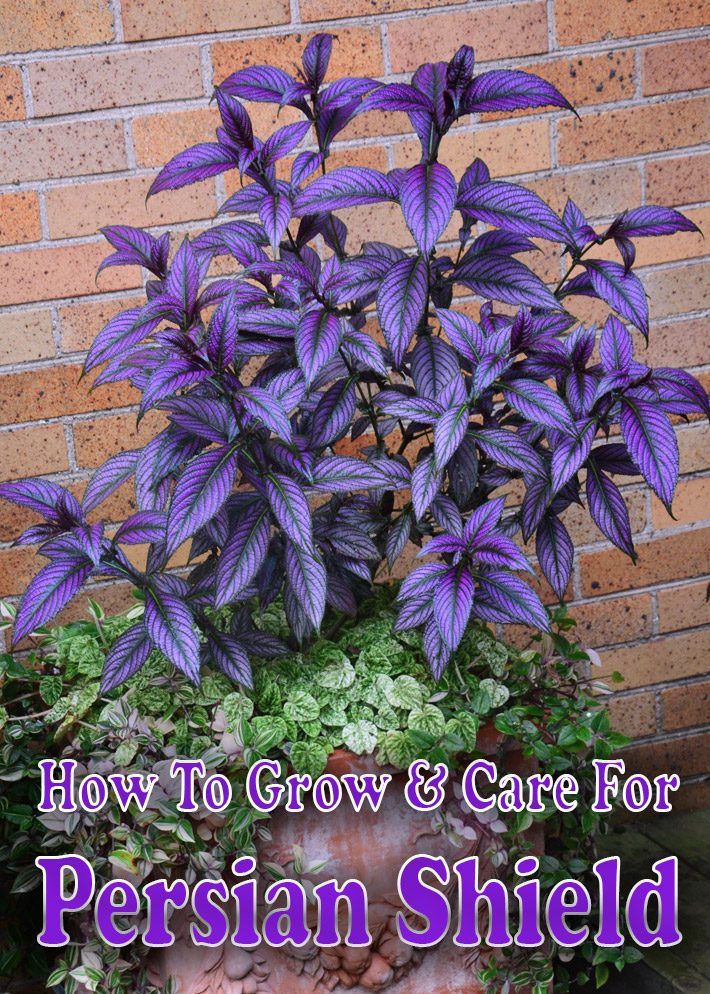
Are you into purple plants? Do you like the notion of a plant which is low-maintenance, rarely has any pest or disease issues, and which will brighten up a room? In that case, consider Persian shield!
This tropical, which originates in southeast Asia, makes a fantastic plant whether indoors or out. The leaves are nearly iridescent or metallic purple when it’s in full color, edged in a deep, dark green, and it can really liven up a room! Let’s get you all the information you need to know about Persian shield (Strobilanthes dyeriana). That way you can enjoy the eye-popping color in your house or yard!
Persian Shield Overview
Common Name: Persian shield, royal purple plant
Scientific Name: Strobilanthes dyeriana
Family: Acanthaceae
Light: Full sun to partial shade
Water: Keep soil evenly moist, water when top couple inches of soil are dry
Temperature: 60 degrees Fahrenheit and above
Humidity: High humidity preferred
Soil: Rich, well-drained soil with lots of plant matter, pH range 5.5-7.5
Fertilizer: Diluted half-strength balanced liquid fertilizer every 2 weeks in spring/summer, less in fall, none in winter
Pests: Spider mites, fungus gnats
Diseases: None are problems for this plant
About Persian Shield
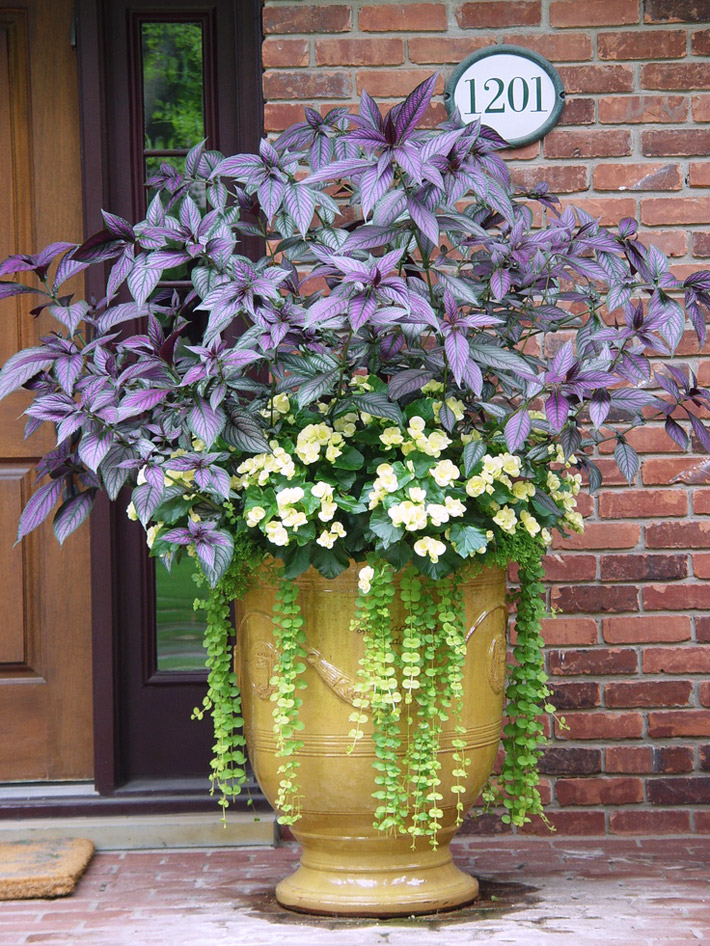
Strobilanthes dyerianus, Persian shield, is sometimes known as the royal purple plant. Unlike many other plants, there aren’t any cultivar variations with additional names, as it’s all the same basic plant. Native to Myanmar (formerly known as Burma), it comes from Southeast Asia.
This lush tropical has lance-shaped, dark green leaves that flush to a brilliant purple. A silvery, iridescent sheen can sometimes coat the purple flush, making the purple look metallic or iridescent. Each of its leaves can grow to reach 7 inches in length and up to 3 inches wide.
Persian shield often grows to be three to four feet tall, and two to three feet in width. It’s primarily grown for those brilliant purple-flushed leaves, but does produce some tiny flowers in the winter months in zones 10-11 or when overwintered indoors.
The Persian shield flower is blue-violet in coloration, tiny and funnel-shaped. They’re often lost against the stunning foliage, and many growers pinch off flower stalks when they appear.
While Persian shied (Strobilanthes dyerianus) is often grown as an annual, it can be grown as a perennial if you have the right conditions. Rainforest plants such as this purple and green plant prefer a humid environment and warm temperatures, and seldom tolerate cold well. As the color of the plant can fade with age as well, most grow this plant as an annual. Alternately, you can heavily cut it back to encourage new growth and color.
Care
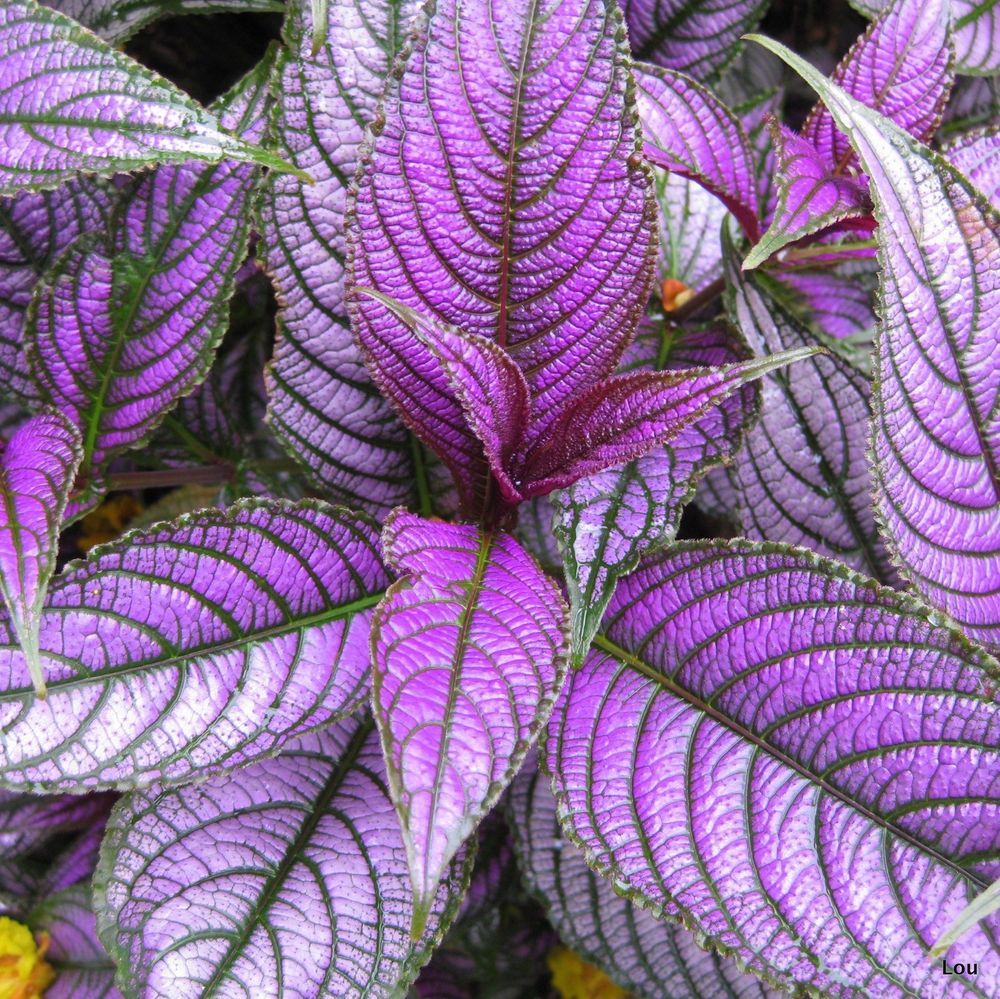
Tropical plants like persian shield can occasionally be a little picky, so it’s essential to know the best conditions to grow them in. Here’s a short checklist of what you need to do.
Light and Temperature
The Persian shield plant can handle full sun to partial shade, but if you’re at all in doubt, opt for slightly shadier conditions. As these often grow under the cover of trees, dappled sunlight is just fine.
People in hot desert environments where the sun is blindingly hot should also plan on going for partial shade conditions when growing this outdoors. At the very least, ensuring the plant has afternoon shade during the hottest part of the day is wise. If your plant is getting too much sunlight, it won’t develop that vibrant, iridescent purple tone, and you should move it somewhere shadier.
Growing your Persian shield as a houseplant? If so, you’ll need a grow light or a sunny window to ensure your plant’s catching enough rays. You’ll also want to turn the plant regularly to ensure it doesn’t become leggy as it reaches towards the light.
Persian shield can be grown outdoors in zones 8-11, but does best in zones 10-11 as it more closely resembles the plant’s natural habitat. Overwintering should only be done in zones 10-11 or on warm years in zone 9. Zone 8 should plan on having it indoors during the cold months.
Temperatures for this plant should remain above 60 degrees to maintain that brilliant coloration. While light frosts will cause the plant to die back, it may recover in the spring if it never got to hard frosts or freezing conditions.
Water and Humidity
Your royal purple plant will like having consistent, even moisture in its soil. Water when the top couple of inches of soil are dry, which indoors is often twice a week (and may be more often outside).
Indoor growers need to monitor their soil moisture regularly, especially throughout the winter months when we’re all running our heaters.
Persian shield does like to grow outside as well, but when doing that, be sure that the soil also remains consistently moist, and add mulch to keep the soil moisture from evaporating.
This is a high humidity plant — it likes damp air! To increase that, place your potted Persian shield plant on top of a tray of pebbles and water. The water will evaporate and provide more humid conditions. Outdoor growers can set bowls of water next to their plants for similar effect.
Soil
As a tropical plant, your Strobilanthes dyerianus is naturally accustomed to rich soil filled with plenty of plant matter that retains water. To simulate this, you’ll want to opt for a rich and well-drained soil. Consider adding extra compost, vermiculite, or peat moss to help keep it moist.
The pH level should be between 5.5 and 7.5 for best growth.
These are extremely good as container plants, and most people grow them that way. However, they can work as bedding plants too provided that you’ve developed a well-drained planting location for them.
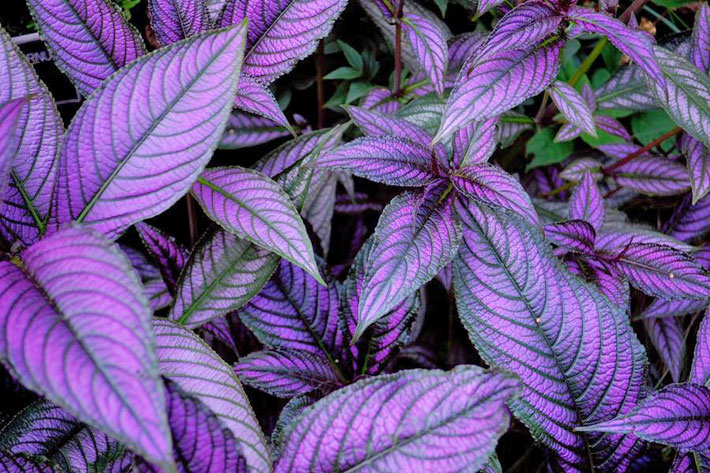
Fertilizer
For most of the year, fertilizing should be done every two weeks with a half-diluted, low-NPK liquid plant food. Aim for one which is balanced NPK, as it requires the nitrogen to grow and the rest to develop healthy root structure and provide its brilliant color.
Slow down feeding as you move into the fall to once a month, and withhold fertilizer through the winter. Once the spring comes again, return to a regular 2-week pattern.
Propagation
Persian shield can be propagated from seeds or cuttings, but I find that cuttings work best.
Preparing your cutting is simplicity itself. Select a stem which is 6″ long and remove all but the uppermost leaves. Place the cut end into either a glass of water or some moist rooting medium of your choice. If using water, change the water daily. In rooting medium, keep it evenly moist.
Place your plant in a shaded location where it still gets some indirect light, and ensure that the humidity is kept up around the plant (a plastic bag placed overtop can help with this). It will develop roots in 2-5 weeks depending on the plant’s vigor and the season.
Repotting
Many people seldom repot these Persian purple plants if they’re thriving, because they simply don’t need it. If your plant looks healthy and happy, then you’re doing just fine!
However, if you want to encourage your plant to expand in size, it’ll need more root space. Also, if it seems to be going through water very quickly, switching to a pot that’s 1-2 inches larger will add more soil and help retain more moisture.
If you do opt to repot, prepare your soil in advance and have it ready. You may wish to gently open up the roots of the plant if it seems to be a bit pot-bound, then replant at the same depth it was previously planted.
Try to avoid jumping drastically in pot size. A plant which was previously planted in a 4″ pot shouldn’t go up to a 12″ pot, as it’ll take forever for it to fill that much space.
Pruning
Other than removing leaves that have died back, there’s little pruning that needs to be done to your Persian shield. Pinch back stems to encourage your plant to become bushier. This can be done at any time that it’s required.
Your plant can get leggy as it gets older, during the winter, or if it needs to be repotted. If pinching back does not discourage the leggy habit, consider repotting. For the winter months, pinch off flower stalks and occasionally pinch back excess stem growth.
While optional, some report that trimming the plant back to a foot tall (leaving enough leaves for photosynthesis) at the end of winter encourages their plants to burst forth with new vigorous growth in the spring.
Persian Shield Problems
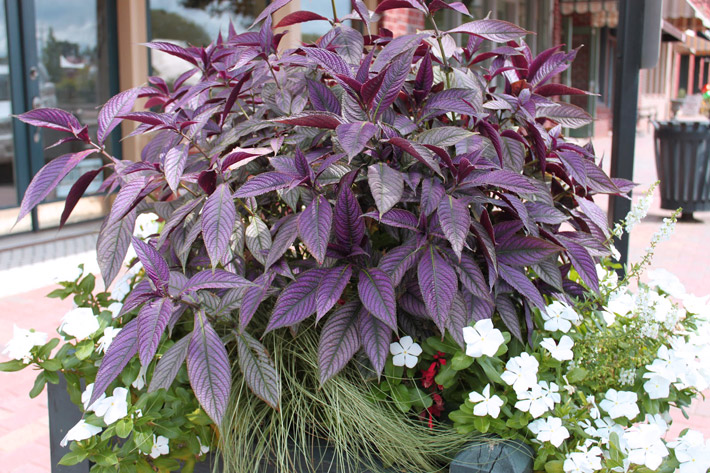
Diseases don’t seem to impact Persian shield, and honestly, most pests won’t bother it much either. It’s extremely easy to care for provided that it’s got the right growing conditions. Still, a few things may come to call; here’s how you handle them.
Growing Problems
Your persian shield will wilt quickly if it has too little water, and it’s immediately obvious. If this happens, increase your frequency of watering to compensate, being sure to keep the soil moist and humidity up around the plant. It bounces back quickly even when it bad shape.
As mentioned earlier, too much light can cause the leaves of your strobilanthes dyeriana to fade. Offering it some shielding from the direct sun can help to ease that problem. Older leaves will also fade in coloration prior to dropping off, which is not abnormal.
Pests
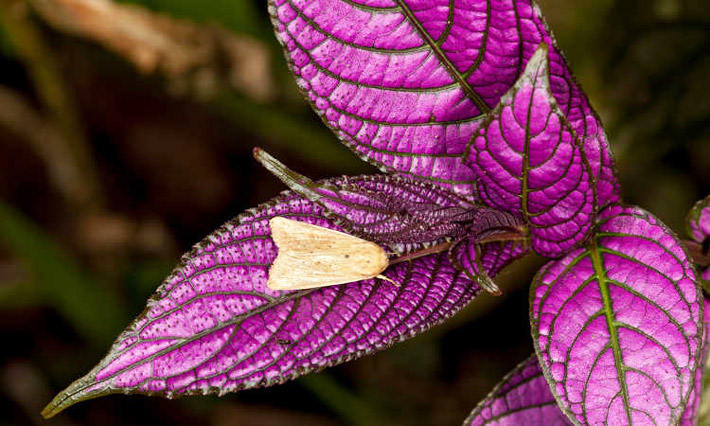
Very few pests can become an issue for your purple and green plants. However, there are still two that might appear, and it’s best to clear them out before they can wreak havoc.
Spider mites, especially red spider mites, are a common indoor pest for Persian shield. These little mites will pierce the flesh of the leaf and suck moisture out of it, causing spotting and leaf yellowing.
Similarly, fungus gnats are a potential issue. These gnats lay their eggs in moist soil, and the larvae will attack your plants if they have any signs of lowered resistance. The combination of mites and gnats together can be deadly!
Thankfully, both of these pests can be deterred by spraying neem oil on all plant surfaces and on the soil’s surface. While neem oil will not kill existing fungus gnat larvae in the soil, it can prevent the adults from laying their eggs there to begin with, and prevent spider mites as well.
An alternative that will penetrate the soil is a pyrethrin spray such as Garden Safe Houseplant & Garden Insect Killer. This will kill fungus gnat larvae, as well as eliminate both adult gnats and spider mites.
Diseases
Almost no diseases whatsoever seem to have any effect on Persian shield. As plants that are accustomed to hot, humid conditions, they even appear to be immune to powdery mildew or other fungal leaf issues. Keep an eye out for damage caused by the pair of pests instead.
Ready to jump in and grow this fantastic foliage? That lush flush of purple is better than any tiny flowers! Have you grown Persian shield before, and if so, how did it go? Share your stories in the comment section!
If you like this post, please give it a five star review and help me share it on facebook!
Please follow us on Facebook Page and enjoy our collection of recipes, crafts, fitness, health tips, gardening, DIY and more…
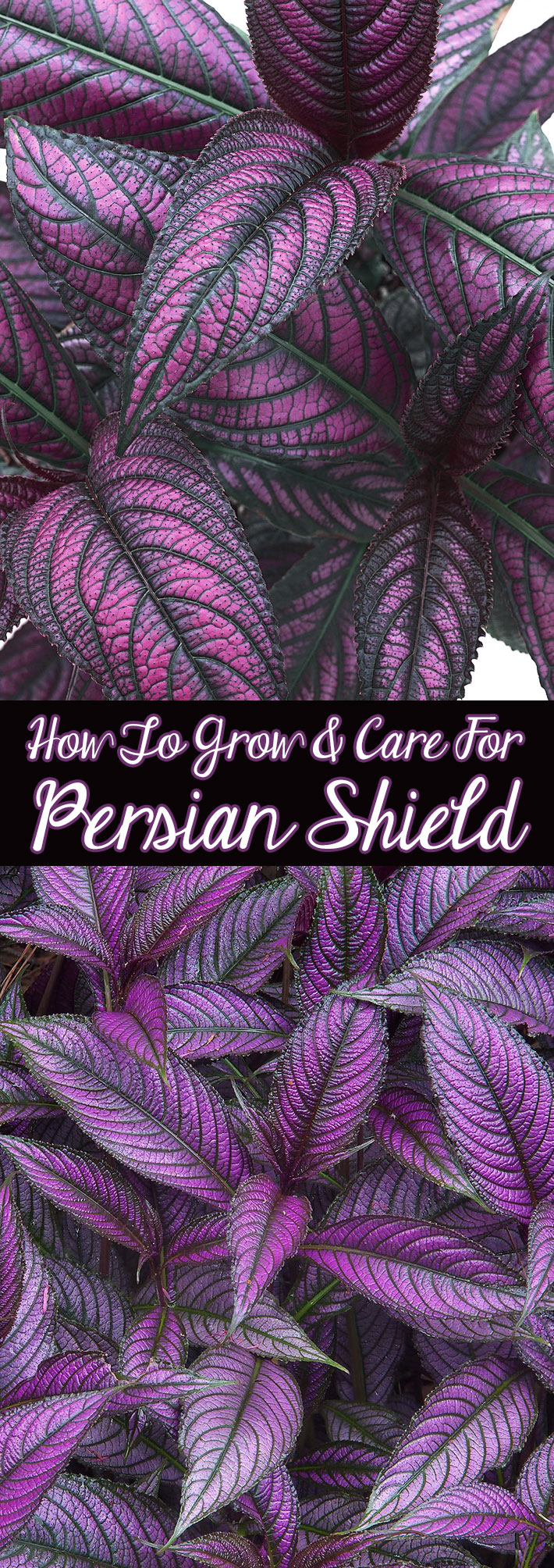
Related
High Climbers – Wisteria Growing Guide
The Best Hydrangeas (Hortensia)
How to Grow and Care for Calathea Orbifolia

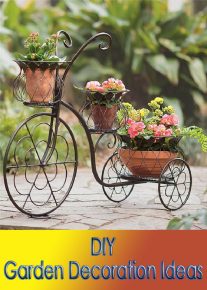


hi can u get this plant in ontario canada. i realyove it
humber nurseries
I bought it there yesterday 05/23/2019